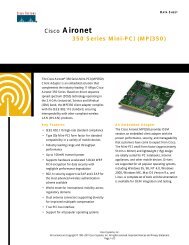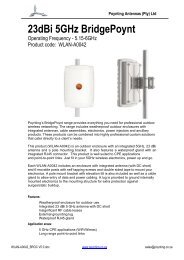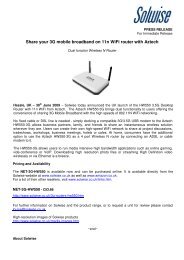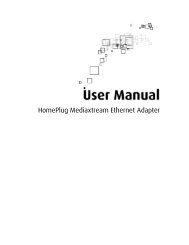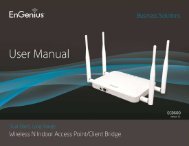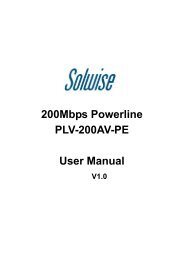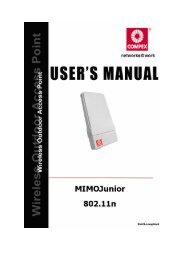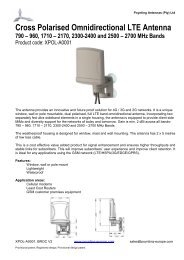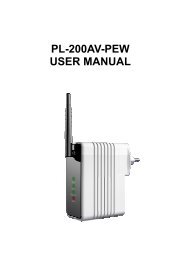You also want an ePaper? Increase the reach of your titles
YUMPU automatically turns print PDFs into web optimized ePapers that Google loves.
57<br />
6.2.4.2. WEP (Wired Equivalent Privacy)<br />
Select the WEP from the drop-down list if your wireless network uses WEP encryption. WEP is an acronym for Wired Equivalent<br />
Privacy, and is a security protocol that provides the same level of security for wireless networks as for a wired network.<br />
WEP is not as secure as WPA encryption. To gain access to a WEP network, you must know the key. The key is a string of<br />
characters that you create. When using WEP, you must determine the level of encryption. The type of encryption determines the key<br />
length.<br />
128-bit encryption requires a longer key than 64-bit encryption. Keys are defined by entering in a string in HEX (hexadecimal - using<br />
characters 0-9, A-F) or ASCII (American Standard Code for Information Interchange - alphanumeric characters) format. ASCII format is<br />
provided so you can enter a string that is easier to remember. The ASCII string is converted to HEX for use over the network. Four keys<br />
can be defined so that you can change keys easily. A default key is selected for use on the network.<br />
• WEP Key Length: Select a 64-bit or 128-bit WEP key length from the drop-down list.<br />
• WEP Key 1-4: You may enter four different WEP keys.<br />
• Default WEP Key: You may use up to four different keys for four different networks. Select the current key that will be used.<br />
• Authentication: Select Open, or Shared Key. Authentication method from the drop-down list. An open system allows any client to<br />
authenticate as long as it conforms to any MAC address filter policies that may have been set. All authentication packets are<br />
transmitted without encryption. Shared Key sends an unencrypted challenge text string to any device attempting to communicate with<br />
the AP. The device requesting authentication encrypts the challenge text and sends it back to the access point. If the challenge text is<br />
encrypted correctly, the access point allows the requesting device to authenticate. It is recommended to select Auto if you are not sure<br />
which authentication type is used.<br />
• Click on the Save Changes button to store these settings.<br />
57



